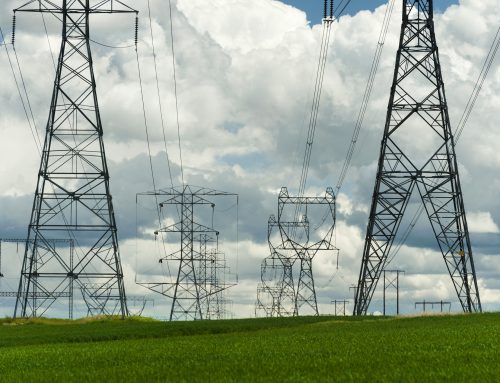Hydrostatic Testing on Pipelines: Growing Challenges and Emerging Technologies
By Febin Jose, Technical Toolboxes

The Increasing Complexity of Pipeline Integrity
Why is pipeline integrity becoming more complex and crucial? To list a few, an increase in the number and severity of regulations and oversight, population encroachment in undeveloped areas, and aging pipelines emerging needing evaluation. Its growing complexity mirrors the advancements in pipeline technology and the rising standards of safety and compliance. In this blog, we’ll look at the history of hydrostatic testing, understanding its importance and exploring how modern solutions like the Hydrotest PowerTool are transforming this crucial process.
The Genesis of Hydrostatic Testing
Hydrostatic testing, as a concept, can trace its roots back to the vessel industry, long before the 1900s. Initially, this process involved using the commodity being transported as the test fluid. This changed post-1955 when the ASME (American Society of Mechanical Engineers) B31.8 Code mandated pressure tests of new pipelines to establish their Maximum Allowable Operating Pressure (MAOP).
In the past, hydrostatic testing was a cumbersome, labor-intensive process. Engineers had to physically remove pipelines from service, fill them with water, and then manually monitor and maintain pressure levels. The process was not only time-consuming but also fraught with risks like environmental contamination and potential pipeline damage.
The Evolution into Modern Day 
Fast forward to today, the process, though refined, still presents significant challenges. The introduction of the “MEGA (Minimum Examination and Gauge Accuracy) Rule” for pipelines has increased the regulatory emphasis on hydrostatic testing, especially for pipelines installed prior to 1970 – a significant portion (54% of the total gas transmission lines) of existing infrastructure.
Engineers often struggle with manual data entry, siloed processes, and the risk of non-compliance with MEGA Rule standards. Spreadsheets and on-paper calculations are easily corrupted when passed from engineer to engineer, as well as hard to validate with the most recent regulations. This regulatory change, while enhancing safety standards, has also upped the ante for pipeline operators in terms of compliance and record-keeping.
Hydrotest PowerTool: A Game-Changer
This is where the Hydrotest PowerTool comes into play. Traditional methods, like Excel spreadsheets or internal programs, while familiar, are increasingly inadequate for today’s complex compliance landscape. They are prone to human error, lack efficient record-keeping capabilities, and can’t keep up with the dynamic regulatory changes.
The Hydrotest PowerTool, however, changes the narrative. This tool supports record-keeping requirements of Traceable, Verifiable, and Complete (TVC), eases existing pipeline MAOP verification/recertification, and ensures compliance with CFRs (Code of Federal Regulation) 192 and 195. It also generates actionable project plans formatted for field use, thus addressing the documentation and compliance challenges head-on.
- Semi-Automated Planning: The tool offers an intuitive interface, significantly reducing the complexity and time involved in hydrotest planning. This level of automation is unattainable with traditional methods.
- Comprehensive Record-Keeping: It ensures full compliance with the “Traceable, Verifiable, and Complete” (TVC) MEGA Rule requirements, a feat challenging to achieve with Excel spreadsheets.
- MAOP Verification: The tool simplifies the verification of new construction pipelines and recertification of Maximum Allowable Operating Pressure (MAOP) for existing pipelines, a task that’s cumbersome with manual methods.
- Advanced Functionality: Features like Asset Data Integration and Intelligent Sectioning enable accurate and efficient data management. The integration with Pipeline HUB and ESRI ArcGIS Map enhances data accuracy and reduces repetitive manual input, a common drawback in Excel
- Collaborative Environment: It fosters a collaborative workspace, ensuring that all team members are aligned and working with the same accurate data.
Beyond Compliance: Enhancing Efficiency and ROI 
But the Hydrotest PowerTool isn’t just about compliance. It’s about efficiency, accuracy, and return on investment. This tool standardizes workflow, minimizes investigative trench work, and saves significant time – a crucial factor in project schedules.
As we continue to navigate the complexities of pipeline integrity, tools like the Hydrotest PowerTool are not just helpful; they are essential. They are the bridge between historical practices and modern requirements, ensuring that we are also equipped for the future.
In summary, the journey from the early days of hydrostatic testing to now reflects our industry’s commitment to safety, efficiency, and innovation. The Hydrotest PowerTool is a testament to this journey, embodying the evolution from manual, risk-prone processes to streamlined, compliant, and efficient solutions.
Discover how the Hydrotest PowerTool can revolutionize your hydrotesting practices. Want to learn more about our Hydrotest PowerTool or to schedule a demo?
Suggested Post
2026 API Compliance: What You Need to Know
2026 API Compliance: What You Need to Know By Kesley Price New rules. Tougher [...]
Corrosion Engineers: How Confident Are You in Your Remaining Strength Calculations?
Corrosion Engineers: How Confident Are You in Your Remaining Strength Calculations? By Kesley Price [...]
Why API Inspections Still Matter More Than Ever
Why API Inspections Still Matter More Than Ever By Kesley Price In an industry [...]










